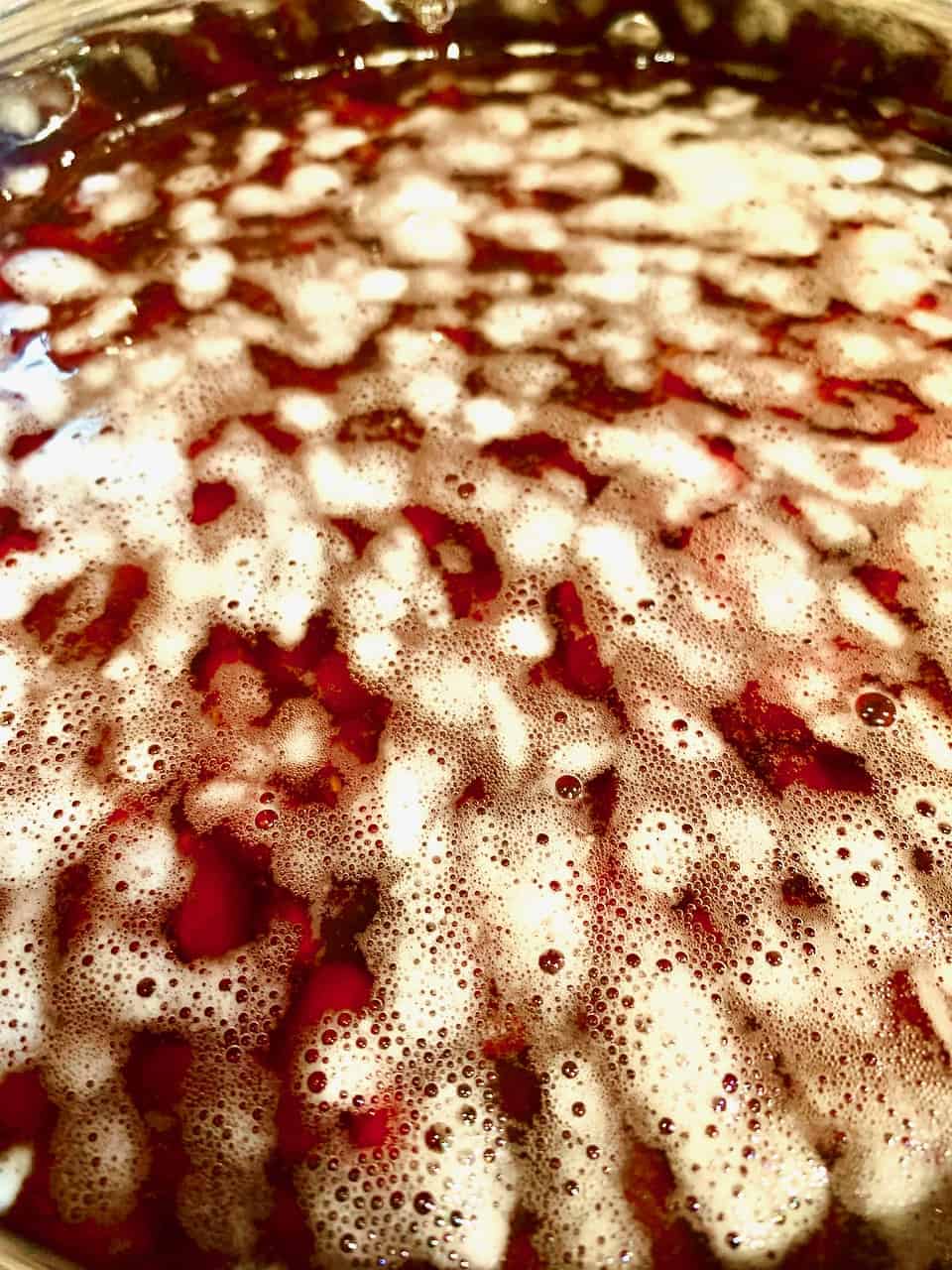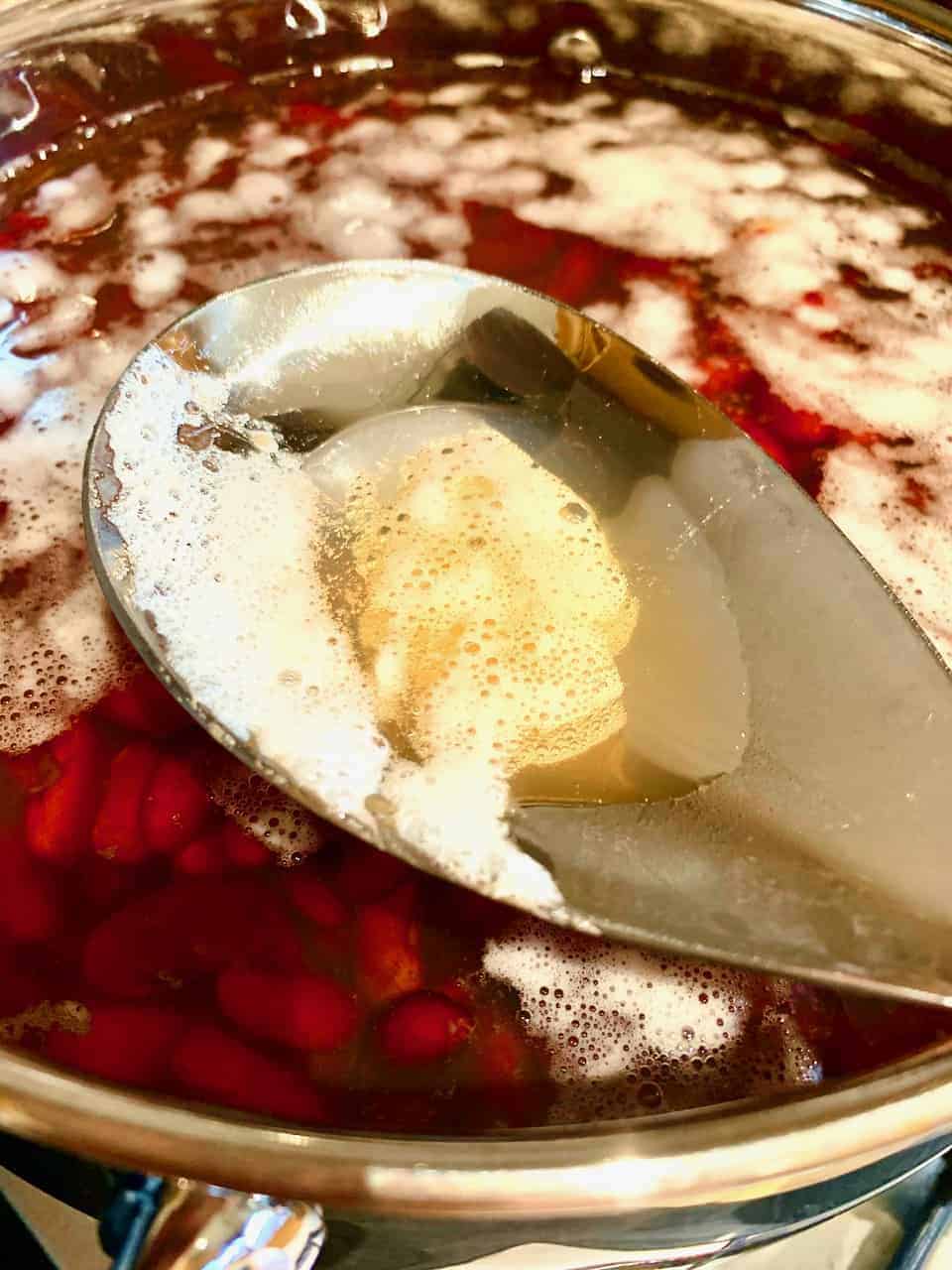This post may contain affiliate links. Please read our disclosure policy.
How to prep, cook and freeze dried red kidney beans for all your recipes – Dried beans are cheaper and tastier than canned versions and a great store cupboard staple to have on-hand!

Yes, it takes a little more effort than simply opening a can, and away you go, but learning how long to soak dried red kidney beans, how to cook red kidney beans, and how to store and freeze the beans is definitely the way forward. A bag of beans is both cheaper and tastier than their canned counterparts and can be batch prepared and frozen in portion sizes.
I have to admit, I always have a couple of tins of beans in my cupboards for any emergency ‘just-in-case’ situation, but I also now buy big bags of dried beans which has been revolutionary. Not only can your batch cook tens of portions at once, but freezing beans has also become something I do every couple of months – these can be frozen for up to six months though if you make large enough batches to last that long.
Cooking dried beans isn’t a difficult or scary process either. Preparing your dried beans takes just a few steps, including pre-soaking and then cooking. I even include a few top tips to perfectly cooked red kidney beans every time.

You can then use these beans for a variety of recipes including these Rainbow Zucchini Boats or in this vegan chili recipe.
Want to save this recipe?
Top tips for perfectly cooked red kidney beans
- Don’t attempt to cook these beans in a slow cooker. This is because they contain high levels of ‘phytohemagglutinin’ which is a toxin to our bodies. Unfortunately, slow cookers often don’t go above the necessary heat required to rid the beans of this toxin and can even enhance them.
- Make sure to rinse the beans thoroughly and check for any debris as there can be some soil or tiny stones in the bag of beans
- Don’t add any flavorings or salt to the beans before soaked, as these can interfere with the rehydration process.
- Unlike a slow cooker, kidney beans can be made in an Instant Pot/pressure cooker. However, I don’t own one, so you’ll have to go elsewhere for that how-to.

How to prepare dried red kidney beans
As I said above, there are only a few steps to this entire post. The steps include soaking the beans, cooking them, and then storing any that you’re not using immediately.
How long do you soak red kidney beans?
The first step to preparing your dried red kidney beans is to soak them. I know there are other methods too. However, these are the two soaking methods I have used most often with success. I prefer always to do a long soak, overnight so that I can pop them in water and forget about them until the next day.
Soaking your beans is said to speed up their cooking time, make them easier to digest (getting rid of the phytic acid and Phytohaemagglutinin in the beans). It also helps them cook more evenly.
Long soak: The easiest way to soak your beans is with a long soak. For this, you can either place them in a large pot for at least 6 hours or overnight, at room temperature.
Boil Soak: This is a ‘quick soak’ method, for those who need beans for the same day. Simply cover the beans with water and boil for three minutes. Then turn off the heat and leave the beans to stand for a minimum of 1 hour (I usually leave them for 2). This method can actually reduce the cooking time of the beans by 5-8 minutes.
In terms of the ratio of water to beans, I always go for 4 or 5:1 so 4-5 cups of water per 1 cup of dried beans.
Also, in terms of bean math – 1 cup of dried beans results in 2.5 cups of cooked beans.
The method
Cooking dried beans is incredibly simple. Begin by rinsing the beans and placing them in a large container with the needed water. Per 1 cup of beans, you’ll need between 4-5 cups of fresh, cold water.

Leave these to soak for at least 6 hours or overnight, at room temperature. During the soak time, the beans will expand 2-2.5x their size so make sure that your container is big enough for this.

After soaking, drain the water and rinse the beans thoroughly, once more. Now your beans are ready to cook to perfection.
How to cook red kidney beans
Place the soaked beans in a large pot and cover with water (4-5 cups of fresh water).
Some people may want to use the same soaking water to then cook the beans. However, I advise against this as the soaking water will have absorbed the nasty stuff that can upset your gut and body. There may also still be some slight sediment in the water, that you likely don’t want tagging along for the whole cooking process. Thus, please use fresh water.

Bring to a boil, boil for 10 minutes and then simmer for a further 30 minutes. Cooking time may vary slightly- so keep an eye after around 25 minutes.
I’ve heard differing opinions on using salt when cooking your beans and how it may affect the cooking process. I tend to leave it out until I know what recipe they’ll be used for anyway.

Stir occasionally, so all beans cook evenly. During the cooking process, a foam can appear on the top of the water. This can easily be scooped out.
Note* I’ve also heard that adding a little oil to the pan can reduce this.


If the beans soak up all the water before the time is up, add boiling water (from the kettle) to cover them.

They are cooked when they have a creamy, tender texture.

Once the beans have finished cooking, drain the liquid.


Can you freeze cooked beans?
As I’ve said above, freezing beans is a fantastic way to have beans for months to come.
If freezing the beans, first leave them to cool down completely after cooking them. You can rinse them with cold water, to help speed up the process.

Separate in convenient portions and store in freezer-safe glass containers (boxes or freezer bags will work). Keep in the freezer for up to 6 months.
For shorter-term storage, these beans can also be kept in an airtight container for 3-5 days in the fridge. Just make sure that the beans are put in the fridge or freezer within two hours of them being cooked. Otherwise, bacteria can start to grow.

When you want to use the frozen beans, take out of the freezer and thaw. You can add them to meals while cooking, or just reheat them by themselves.

If you have any questions, feel free to ask them in the comments. You can also tag me in your recreations on Instagram @Alphafoodie.

Red Kidney Beans – How to Prep, Cook, Freeze
Equipment
- Large Pan
Ingredients
- Red kidney Beans
- Water
Instructions
- Begin by rinsing the beans and placing them in a large container with the needed water. Per 1 cup of beans, you’ll need between 4-5 cups of fresh, cold water. Remember every 1 cup of dried beans will become 2.5 cups of cooked beans.

- Leave these to soak for at least 6 hours or overnight, at room temperature ( alternatively, use the boil soak method in the notes). During the soak time, the beans will expand 2-2.5x their size so make sure that your container is big enough for this.

- After soaking, drain the water and rinse the beans thoroughly, once more. Next, it’s time to cook your beans.

- To cook them, place the soaked beans in a large pot and cover with water (4-5 cups of fresh water). *

- Bring to a boil, boil for 10 minutes and then simmer for a further 30 minutes. Cooking time may vary slightly- so keep an eye after around 25 minutes.

- Stir occasionally so all beans cook evenly. During the cooking process, a foam can appear on the top of the water. This can easily be scooped out.** If the beans soak up all the water before the time is up, add more boiling hot water (from the kettle) to cover them.

- They are cooked when they have a creamy, tender texture. Once the beans have finished cooking, drain the liquid.

- If freezing the beans, first leave them to cool down completely after cooking them. You can rinse them with cold water, to help speed up the process.

- Separate in convenient portions and store in freezer-safe glass containers ( boxes or freezer bags will work). Keep in the freezer for up to 6 months.

- For shorter-term storage, these beans can be kept in an airtight container for 3-5 days in the fridge. Just make sure that the beans are put in the fridge or freezer within two hours of them being cooked. Otherwise, bacteria can start to grow. When you want to use the frozen beans, take out of the freezer and thaw. You can add them to meals while cooking, or just reheat them by themselves.

Notes
- Soaking your beans is said to speed up their cooking time, make them easier to digest ( getting rid of the phyto acid and Phytohaemagglutinin in the beans). It also helps them cook more evenly. Long soak: The easiest way to soak your beans is with a long soak. For this, you can either place them in a large pot for at least 6 hours or overnight, at room temperature. Boil Soak: This is a ‘quick soak’ method, for those who need beans for the same day. Simply cover the beans with water and boil for three minutes. Then turn off the heat and leave the beans to stand for a minimum of 1 hour ( I usually leave them for 2). This method can actually reduce the cooking time of the beans by 5-8 minutes.
- In terms of the ratio of water to beans, I always go for 4 or 5:1 so 4-5 cups of water per 1 cup of dried beans.
- The bean math= 1 cup of dried beans results in 2 1/2 cups of cooked beans.
- * Some people may want to use the same soaking water to then cook the beans, however, I definitely advise against this as the soaking water will have absorbed the nasty stuff that can upset your gut and body. There may also still be some slight sediment in the water, that you likely don’t want tagging along for the whole cooking process.
- ** I’ve also heard that adding a little oil to the pan can reduce this.



















I added a ham hock, and stripped the meat off and added back to beans. Turned out well and I plan on freezing in smaller portions. Thank you!!
Thanks for sharing, Theresa!